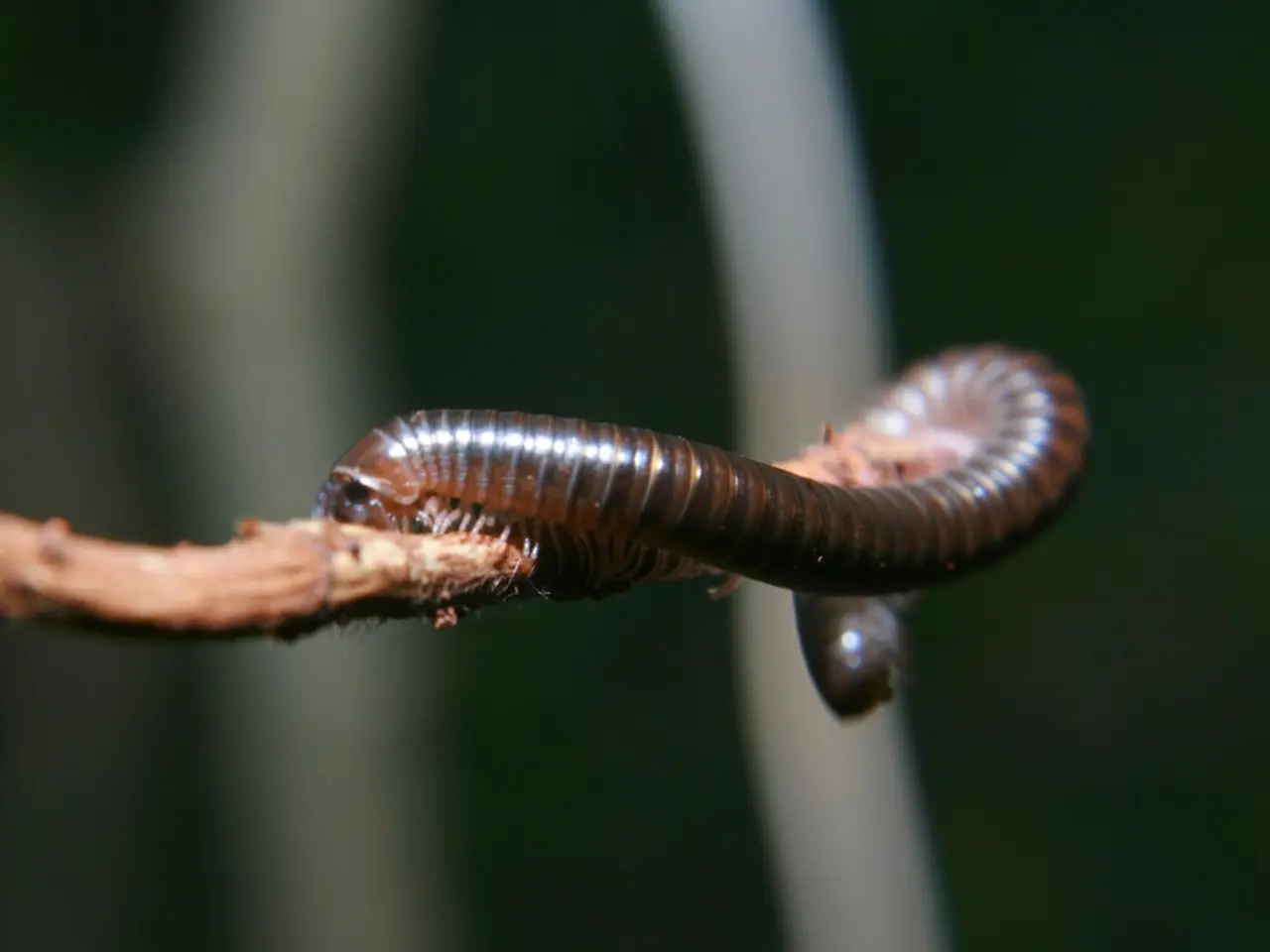Nematode- capture fungus utilizes adhesive lethal traps
In the intricate web of life, the relationship between nematodes and their fungal predators is a classic example of an evolutionary arms race. A recent focus of study has been on nematophagous fungi, a group of organisms that employ sticky death traps to capture and consume nematodes.
These fungi have developed a unique method of trapping nematodes using a sticky substance. The traps are formed from specialized hyphae, thread-like structures that make up the body of the fungus. Once a nematode touches the trap, the fungus quickly invades its body, consuming it from the inside out.
The process begins with the formation of sticky traps. The fungus produces specialized hyphae that develop into three-dimensional adhesive structures, often referred to as "sticky traps." These traps are typically elevated above the fungal colony to maximize contact with mobile nematodes.
When a nematode brushes against these sticky structures, it becomes firmly attached due to the adhesive substance secreted by the hyphae. This immobilization is often rapid and can involve both physical entrapment and chemical interactions between the fungal surface and the nematode cuticle.
Once the nematode is trapped, the fungus penetrates its cuticle using specialized hyphae. Digestive enzymes are secreted into the nematode’s body, breaking down tissues and allowing the fungus to absorb nutrients. After consumption, the fungus may produce spores either on or within the nematode, allowing for dispersal and colonization of new environments.
This method is distinct from other nematophagous fungi, such as endoparasitic species, which infect nematodes primarily by adhesion of spores to the nematode cuticle, followed by internal growth. In contrast, sticky trap fungi rely on active, external trapping structures to capture prey before internal colonization.
Understanding the relationships between nematophagous fungi and other organisms is crucial for preserving biodiversity and ecosystem health. The survival strategy of these fungi thus centers on the construction of adhesive traps, efficient prey capture, and rapid assimilation of nematode biomass, providing a significant ecological advantage in nutrient-poor environments.
The story of the fungus that traps nematodes is a testament to nature's ingenuity, reminding us that life is full of surprises and inviting us to look closer at the world around us. As researchers continue to explore this intriguing field, they are likely to uncover new insights into the complex interactions that shape our world.
Furthermore, the study of nematophagous fungi has significant implications for agriculture, as they can help control nematode populations, reducing the need for chemical pesticides and promoting sustainable farming practices. With continued research, these organisms could play a vital role in maintaining ecological balance and promoting a healthier planet.
> References: > [1] Brinkman, W. R., & Ferris, G. A. (2004). Nematophagous fungi. Annual Review of Phytopathology, 42, 315-334. > [2] Jones, R. G. (2006). Nematophagous fungi. In Encyclopedia of Life Sciences (pp. 1-10). John Wiley & Sons, Ltd.
- The study of nematophagous fungi is a vital part of environmental-science and education-and-self-development, providing opportunities for personal-growth and career-development in the field of science, especially in areas like biology and research.
- The intricate relationship between nematodes and their fungal predators, known as nematophagous fungi, is not just fascinating in terms of science, but also has practical applications in fields such as agriculture (reducing the need for chemical pesticides) and conservation (maintaining biodiversity and ecosystem health).
- The evolution of nematophagous fungi, which use sticky traps to capture and consume nematodes, offers fascinating insights into the complex processes of biodiversity and evolution.
- In the realm of conservation efforts, understanding the methods by which nematophagous fungi capture and consume nematodes can provide valuable information for the effective management and preservation of various ecosystems.
- The understanding and application of the strategies employed by nematophagous fungi, such as the construction of adhesive traps and efficient prey capture, can lead to significant advancements in agriculture and contribute to the overall goal of sustainable development.
- Pursuing research in the field of nematophagous fungi can lead to meaningful discoveries about the intricate and surprising interactions that shape our world, all while fostering personal growth by expanding one's knowledge in science and environmental-science.




